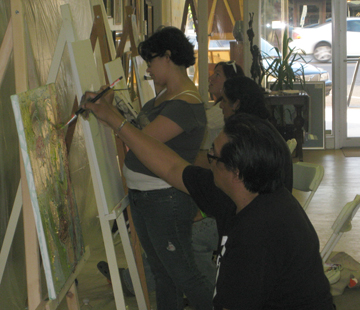FAAM fills a gaping void by promoting critical writing on aboriginal art of the Americas directed at the public and driven by artists. It synthesizes the academic and the public perspectives and promotes artists with little to no support infrastructure outside of their own communities. Without a doubt it is on track to be one of the strongest, highest quality publications of its kind.
—David Winfield Norman,
art writer, Olso, Norway
art writer, Olso, Norway
Our pilot Issue N°0 was successfully published in April, and now we're almost ready to print Issue N°1, which will be out in early August. To help raise funds for some of the printing costs, we've launched a Kickstarter campaign, asking for a minimum of $4,900, approximately half of our printing costs. After 22 days, we've raised 89% of our requested funds. Now we just have one week left to raise the rest of the funds. With Kickstarter, you have to raise the entire amount to receive any of the pledged funds. So, we're asking your help in printing Issue N°1. No amount is too small, and every bit helps—donate today. And thanks for your interest and support!




